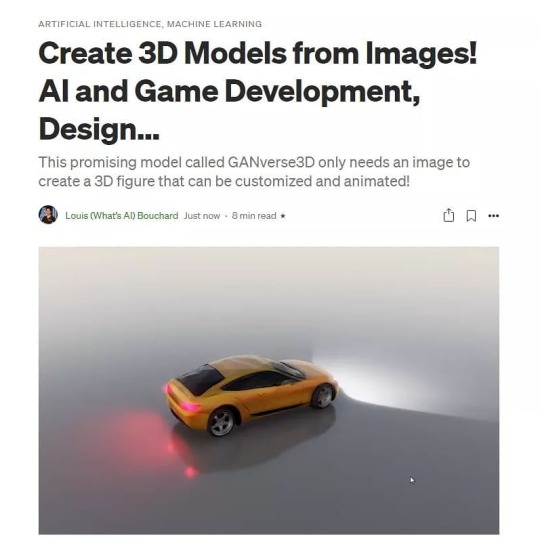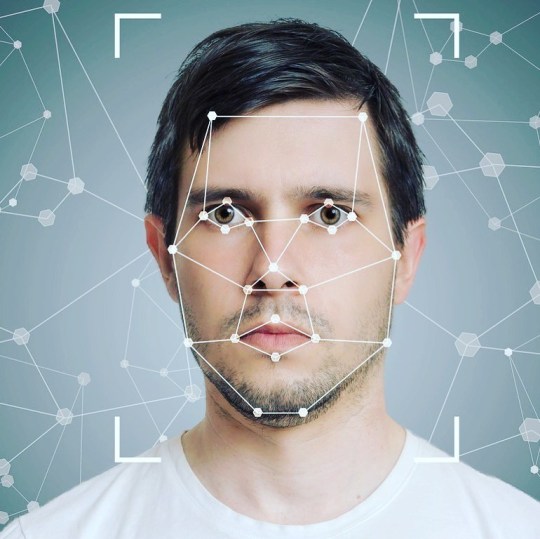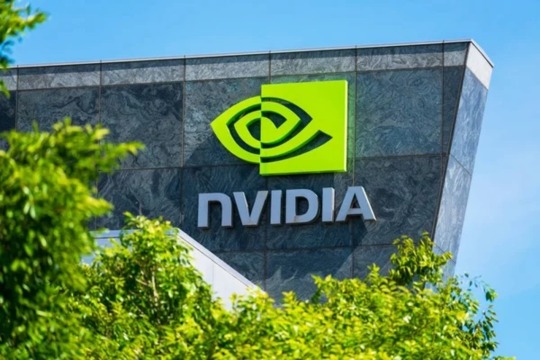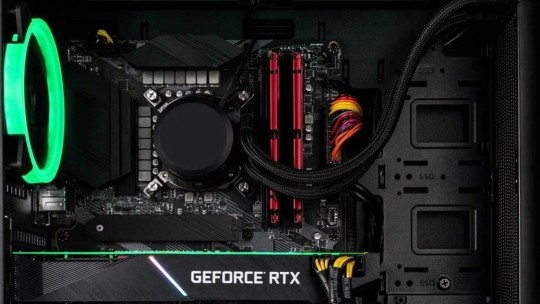#NVIDIAai
Text
NVIDIA AI Aerial Upgrades Wireless AI-RAN With Generative AI

NVIDIA AI Aerial Optimizes Wireless Networks, Delivers Next-Generation AI Experiences on One Platform
With an AI computing infrastructure, telecommunications companies are moving beyond voice and data services to optimize wireless networks and meet the demands of generative AI on mobile, robotics, autonomous vehicles, smart factories, 5G, and many other areas.
A set of accelerated computing hardware and software called NVIDIA AI Aerial was unveiled today with the goal of developing, modeling, training, and implementing AI radio access network technology (AI-RAN) for wireless networks in the AI age.
The platform will develop into an essential building block that enables large-scale network optimization to meet the needs of numerous new services. As a result, there will be large total cost of ownership savings and new income streams for enterprise and consumer services for telecom providers.
Telecommunications service providers can now support generative AI-driven co-pilots and personal assistants, teleoperations for manufacturing robots and autonomous vehicles, computer vision in manufacturing and agriculture, logistics, emerging spatial computing applications, robotic surgery, 3D collaboration, and 5G and 6G advancements thanks to NVIDIA AI Aerial.
AI-RAN
Driving Future Networks With AI-RAN
The first AI-RAN platform in the world, NVIDIA AI Aerial, can host generative AI, manage RAN traffic, and incorporate AI into network optimization.
With edge AI apps to host internal and external generative AI applications, AI-RAN provides software-defined RAN that is both high-performance and energy-efficient. It also improves network experience and opens up new revenue streams.
The multifunctional networks of the future that depend on AI-powered telecommunications capabilities are built on AI-RAN.
Using NVIDIA AI Aerial in the Telecom Sector
In order to enable telecom operators to engage at any point from development to deployment for next-generation wireless networks, the NVIDIA AI Aerial platform provides access to a full range of capabilities, including a high-performance, software-defined RAN along with training, modeling, and inference options.
Among the features of the NVIDIA AI Aerial platform are:
Software libraries are included in NVIDIA Aerial CUDA-Accelerated RAN to help partners create and implement high-performance virtualized RAN workloads on computing platforms that are accelerated by NVIDIA.
The PyTorch and TensorFlow software libraries included in the NVIDIA Aerial AI Radio Frameworks are used to create and train models that enhance spectral efficiency and introduce new functionalities to the processing of 5G and 6G radio signals. NVIDIA Sionna, a link-level simulator that facilitates the creation and training of neural network-based 5G and 6G radio algorithms, is also included in this.
A framework for developing network digital twins at the system level is called NVIDIA Aerial Omniverse Digital Twin (AODT). With the use of AODT, wireless networks can be simulated with physical accuracy, ranging from a single base station to a vast network with numerous base stations spanning a whole city. It includes realistic terrain and object attributes of the actual world, user-equipment simulators, and software-defined RAN (Aerial-CUDA Accelerated RAN).
NVIDIA Innovation Center for AI Aerial and AI RAN
With the launch of the AI-RAN Innovation Center, NVIDIA is working with T-Mobile, Ericsson, and Nokia to quicken the commercialization of AI-RAN.
The facility will make use of the NVIDIA AI Aerial platform’s primary features. Through the development of AI-RAN, the partnership aims to bring RAN and AI innovation closer together to give customers’ revolutionary network experiences.
Ericsson’s investment in its AI-RAN technology, communications service providers may now implement portable RAN software that works on a variety of platforms.
The NVIDIA AI Aerial Environment
Softbank and Fujitsu are important members of the NVIDIA AI Aerial ecosystem.
For testing and simulation purposes, Ansys and Keysight use the NVIDIA Aerial Omniverse Digital Twin, and academic partners including Deepsig, ETH-Zurich, Northeastern University, and Samsung work together on 6G research and NVIDIA Aerial AI Radio Frameworks.
Key partners for NVIDIA AI Aerial include cloud stack software companies like Aarna Networks, Canonical, Red Hat, and Wind River; networking stack providers like Arrcus network; and server infrastructure providers like Dell Technologies, Hewlett Packard Enterprise, and Supermicro. AI solution decision-making is speeding up with the help of edge solution providers like Vapor.io and system integrators like World Wide Technology and its AI Proving Ground.
Read more on govindhtech.com
#NVIDIAAI#AerialUpgrades#WirelessAI#GenerativeAI#AIcomputing#hardware#software#AIRAN#generativeAIapplications#TensorFlow#AIpowered#PyTorch#RedHat#DellTechnologie#dell#ai#nvidia#NVIDIAAIAerial#news#technology#technews#govindhtech
0 notes
Text

Contract Management Software for Legal Departments - Agreementpaper
Say goodbye to missed clauses and compliance risks! Agreementpaper offers advanced AI-powered tools for precise document analysis and automated risk assessment. Protect your budget and simplify contract management—let’s get started! Book a demo now.
#GenAI#RiskManagement#DocumentAnalysis#AI#NVIDIAAI#ContractManagement#Innovation#ContractManagementsoftware#ProcurementManager#Procurement#SupplyChain#Sourcing#Purchasing#ProcurementProfessionals#SupplyChainManagement#StrategicSourcing#SupplyChainSolutions#VendorManagement#SupplyChainOptimization#ProcurementExcellence#PurchasingPower#SupplyChainStrategy#CostManagement#ProcurementStrategy
0 notes
Text
🚀 Nvidia: Leading the AI Revolution 🚀

In the rapidly evolving landscape of technology, Nvidia stands as a titan, driving the future of artificial intelligence (AI) with pioneering chip innovations and computational systems. Their breakthroughs, from the Blackwell and Hopper chips to their unmatched collaborations with tech giants like AWS and Google, are not just technological feats; they are milestones marking the path to a future where AI reshapes our world.
🚀 From Concept to Reality: Nvidia's AI Innovations
Nvidia's journey from enhancing chip performance through crystal fusion to developing AI-driven digital twins and chatbots showcases their commitment to pushing the boundaries of what AI can achieve. The collaboration with industry leaders has led to the integration of AI technologies that are transforming business practices and daily life.
💡 AI for a Better Tomorrow
The practical applications of Nvidia's AI technologies, such as optimizing manufacturing processes and advancing machine learning through projects like General Robotics 003, are testaments to the transformative power of AI. These innovations offer a glimpse into a future where AI not only enhances efficiency but also pioneers new realms of creativity and exploration.
🌍 A Call to Action
As we stand on the brink of this new era, the importance of community and collaboration in AI development has never been clearer. Nvidia's journey underscores the potential of AI to revolutionize industries and improve lives, inviting us all to engage, contribute, and shape the future of technology.
Explore how Nvidia is leading the charge into the AI-driven future and join the conversation on how we can collectively navigate the promises and challenges of this technological revolution. Check out the full story here: Revolutionizing the Future: Nvidia's AI Breakthroughs and Collaborative Innovation.
1 note
·
View note
Text
NVIDIA lanza modelos de agentes NIM para que las empresas desarrollen su propia IA
Lus socios globales de @nvidiaai lanzan modelos de agentes NIM para que las empresas desarrollen su propia Inteligencia Artificial.
NVIDIA anuncia NVIDIA NIM Agent Blueprints, un catálogo de flujos de trabajo de IA preentrenados y personalizables que equipa a millones de desarrolladores empresariales con un conjunto completo de software para crear e implantar aplicaciones de IA generativa para casos de uso canónicos como avatares de atención al cliente, generación aumentada mediante recuperación y cribado virtual para el…
0 notes
Text
Estrena Nvidia modelos de IA con contenidos de YouTube y Netflix
Documentos internos filtrados a @404mediaco revelan que @NVIDIA habría extraído de forma masiva vídeos con derechos de autor de @Youtube, @Netflix y otras fuentes para entrenar sus modelos de @NVIDIAAI.
Agencias/Ciudad de México.- Nvidia ha hecho ‘scraping’ de contenidos ofrecidos por plataformas como YouTube y Netflix para entrenar sus modelos de Inteligencia Artificial (IA) con el objetivo de para desarrollar distintos proyectos comerciales, según publicado recientemente 404 Media.
El ‘scraping’ o raspado de datos, es una técnica que permite extraer información de sitios web y de contenido en…
0 notes
Video
youtube
GPU AS A SERVICE: PROYECTOS QUE CREECERAN FUERTEMENTE
#GPU AS A SERVICE: PROYECTOS QUE CREECERAN FUERTEMENTE dentro de las narrativas de #DePIN #ai #IA #ArtificialIntelligence #Cloud https://youtu.be/i64TOWP6k7M?si=kfROwOCJsuxvBb3F via @rendernetwork @nvidia @NVIDIAGeForce @NVIDIAGeForceES @NVIDIAGeForceFR @NVIDIAAI @InferixGPU @AethirCloud @aethirCSD
1 note
·
View note
Photo

I just published Create 3D Models from Images! AI and Game Development, Design… Read more (link in story): https://ift.tt/3glseny
posted on Instagram - https://instagr.am/p/CNzxIARgPqh/
#ai#machinelearning#deeplearning#artificialintelligence#datascience#ml#innovation#nvidia#nvidiaai#gtc
11 notes
·
View notes
Photo

The #EU proposal to ban facial recognition for five years; one of the most developed areas of #ML and #AI is an idea straight from medieval times. Even an #AI neophytes will agree, the tech offer enormous potential in solving complex security issues facing humanity today. It’s also true, the tech poses some risk, but the solution is not a blanket ban. The risk can be mitigated by carefully legislating on the areas of potential abuse. A decision like that would greatly stifle AI innovation within #europeanunion and doesn’t stop bad actors from accessing the technology in a highly globalized landscape. #EU bureaucrats in Brussels over and over again have demonstrated their overzealousness with regulations, a sure way of discouraging innovation and wider support by member states. #brexit is a perfect example of country that got fed up with #EU overreach and more will follow if status quo is maintained. 🍡 🍡 🍡 🍡 🍡 🍡 * * * * * #ai #artificialintelligence #computerscience #machinelearning #machinelearningalgorithms #machinelearningtools #facialrecognition #biometrics #neuralnetworks #deeplearning #amazon #googleai #googleml #nvidia #nvidiaai #nvidiageforce #computing #it #informationtechnology # (at Nairobi) https://www.instagram.com/p/B7lq_pchWZ0/?igshid=dehndrhjezwp
#eu#ml#ai#europeanunion#brexit#artificialintelligence#computerscience#machinelearning#machinelearningalgorithms#machinelearningtools#facialrecognition#biometrics#neuralnetworks#deeplearning#amazon#googleai#googleml#nvidia#nvidiaai#nvidiageforce#computing#it#informationtechnology
0 notes
Text
Why Cybersecurity AI Requires Generative AI Guardrails

Three Strategies to Take Off on the Cybersecurity Flywheel AI Large language models provide security issues that Generative AI guardrails can resolve, including information breaches, access restrictions, and quick injections.
Cybersecurity AI
In a kind of progress flywheel, the commercial changes brought about by generative AI also carry dangers that AI itself may help safeguard. Businesses that adopted the open internet early on, over 20 years ago, were among the first to experience its advantages and develop expertise in contemporary network security.
These days, enterprise AI follows a similar trajectory. Businesses who are following its developments, particularly those with strong generative AI capabilities, are using the lessons learned to improve security.
For those who are just beginning this path, here are three major security vulnerabilities for large language models (LLMs) that industry experts have identified and how to handle them using AI.
Gen AI guardrails
AI Restraints Avoid Sudden Injections
Malicious suggestions that want to sabotage the LLM underlying generative AI systems or get access to its data may attack them.
Generative AI guardrails that are included into or positioned near LLMs are the greatest defense against prompt injections. Generative AI guardrails, like concrete curbs and metal safety barriers, keep LLM applications on course and on topic.
NVIDIA NeMo Guardrails
The industry has produced these solutions and is still working on them. The NVIDIA NeMo Generative AI guardrails program, for instance, enables developers to safeguard the dependability, security, and safety of generative AI services.
AI Recognizes and Preserves Private Information
Sometimes confidential information is revealed by the answers LLMs provide in response to prompts. Credentials are becoming more and more complicated thanks to multifactor authentication and other best practices, expanding the definition of what constitutes sensitive data.
All sensitive material should be properly deleted or concealed from AI training data to prevent leaks. AI algorithms find it simple to assure an efficient data cleansing procedure, while humans find it difficult given the magnitude of datasets utilized in training.
Anything private that was unintentionally left in an LLM’s training data may be protected against by using an AI model trained to identify and conceal sensitive information.
Businesses may use NVIDIA Morpheus, an AI framework for developing cybersecurity apps, to develop AI models and expedited pipelines that locate and safeguard critical data on their networks. AI can now follow and analyze the vast amounts of data flowing across a whole corporate network thanks to Morpheus, something that is not possible for a person using standard rule-based analytics.
AI Could Strengthen Access Control
Lastly, hackers could attempt to get access to an organization’s assets by using LLMs. Thus, companies must make sure their generative AI services don’t go beyond what’s appropriate.
The easiest way to mitigate this risk is to use security-by-design best practices. In particular, give an LLM the fewest rights possible and regularly review those privileges so that it can access just the information and tools required to carry out its specified tasks. In this instance, most users probably just need to adopt this straightforward, typical way.
On the other hand, AI can help with LLM access restrictions. By analyzing an LLM’s outputs, an independent inline model may be trained to identify privilege escalation.
Begin Your Path to AI-Powered Cybersecurity
Security remains to be about developing measures and counters; no one approach is a panacea. Those that employ the newest tools and technology are the most successful on that quest.
Organizations must understand AI in order to protect it, and the best way to accomplish this is by implementing it in relevant use cases. Full-stack AI, cybersecurity, NVIDIA and partners provide AI solutions.
In the future, cybersecurity and AI will be linked in a positive feedback loop. Users will eventually learn to trust it as just another automated process.
Find out more about the applications of NVIDIA’s cybersecurity AI technology. And attend the NVIDIA AI Summit in October to hear presentations on cybersecurity from professionals.
NVIDIA Morpheus
Cut the time and expense it takes to recognize, seize, and respond to threats and irregularities.
NVIDIA Morpheus: What Is It?
NVIDIA Morpheus is an end-to-end AI platform that runs on GPUs that enables corporate developers to create, modify, and grow cybersecurity applications at a reduced cost, wherever they are. The API that powers the analysis of massive amounts of data in real time for quicker detection and enhances human analysts’ skills with generative AI for maximum efficiency is the Morpheus development framework.
Advantages of NVIDIA Morpheus
Complete Data Visibility for Instantaneous Threat Identification
Enterprises can now monitor and analyze all data and traffic throughout the whole network, including data centers, edges, gateways, and centralized computing, thanks to Morpheus GPU acceleration, which offers the best performance at a vast scale.
Increase Productivity Through Generative AI
Morpheus expands the capabilities of security analysts, enables quicker automated detection and reaction, creates synthetic data to train AI models that more precisely identify dangers, and simulates “what-if” scenarios to avert possible attacks by integrating generative AI powered by NVIDIA NeMo.
Increased Efficiency at a Reduced Cost
The first cybersecurity AI framework that uses GPU acceleration and inferencing at a scale up to 600X quicker than CPU-only solutions, cutting detection times from weeks to minutes and significantly decreasing operating expenses.
Complete AI-Powered Cybersecurity Solution
An all-in-one, GPU-accelerated SDK toolset that uses AI to handle different cybersecurity use cases and streamline management. Install security copilots with generative AI capabilities, fight ransomware and phishing assaults, and forecast and identify risks by deploying your own models or using ones that have already been established.
AI at the Enterprise Level
Enterprise-grade AI must be manageable, dependable, and secure. The end-to-end, cloud-native software platform NVIDIA AI Enterprise speeds up data science workflows and simplifies the creation and implementation of production-grade AI applications, such as voice, computer vision, and generative AI.
Applications for Morpheus
AI Workflows: Quicken the Development Process
Users may begin developing AI-based cybersecurity solutions with the assistance of NVIDIA cybersecurity processes. The processes include cloud-native deployment Helm charts, training and inference pipelines for NVIDIA AI frameworks, and instructions on how to configure and train the system for a given use case. The procedures may boost trust in AI results, save development times and cut costs, and enhance accuracy and performance.
AI Framework for Cybersecurity
A platform for doing inference in real-time over enormous volumes of cybersecurity data is offered by Morpheus.
Data agnostic, Morpheus may broadcast and receive telemetry data from several sources, including an NVIDIA BlueField DPU directly. This enables continuous, real-time, and varied feedback, which can be used to modify rules, change policies, tweak sensing, and carry out other tasks.
AI Cybersecurity
Online safety Artificial Intelligence (AI) is the development and implementation of machine learning and accelerated computing applications to identify abnormalities, risks, and vulnerabilities in vast volumes of data more rapidly.
How AI Works in Cybersecurity
Cybersecurity is an issue with language and data. AI can immediately filter, analyze, and classify vast quantities of streaming cybersecurity data to identify and handle cyber threats. Generative AI may improve cybersecurity operations, automate tasks, and speed up threat detection and response.
AI infrastructure may be secured by enterprises via expedited implementation of AI. Platforms for networking and secure computing may use zero-trust security to protect models, data, and infrastructure.
Read more on govindhtech.com
#Cybersecurity#AIRequires#GenerativeAI#Guardrails#largelanguagemodels#LLM#AItechnology#NVIDIA#NVIDIAMorpheus#AImodels#AIEnterprise#NVIDIAAI#cybersecuritydata#ArtificialIntelligence#data#news#technology#technews#govindhtech
0 notes
Text

Agreementpaper : Part of nVIDIA AI Program Network
Exciting News! Agreementpaper is now part of the NVIDIA AI Program Network! We're leveraging cutting-edge AI technology to revolutionize contract management. Stay tuned for groundbreaking innovations!
#AI#NVIDIAAI#ContractManagement#Innovation#ContractManagementsoftware#ProcurementManager#Procurement#SupplyChain#Sourcing#Purchasing#ProcurementProfessionals#SupplyChainManagement#StrategicSourcing#SupplyChainSolutions#VendorManagement#SupplyChainOptimization#ProcurementExcellence#PurchasingPower#SupplyChainStrategy#CostManagement#ProcurementStrategy#ProcurementLeaders#SupplierRelationships#SupplyChainEfficiency#ProcurementInnovation
0 notes
Photo

Made this with @nvidia ‘s GauGAN @adobe capture , Adobe draw, and @photoshop . GauGAN, named after post-Impressionist painter Paul Gauguin, creates photorealistic images from segmentation maps, which are labeled sketches that depict the layout of a scene and it’s on @nvidiaai playground. Try it out and make something or something 👨🎨 #abstractart #art #graphicdesign #artificialintelligence #adobe #nvidia https://www.instagram.com/p/B3pNJmBpdH3/?igshid=77i92mnrrqgy
1 note
·
View note
Photo

Nvidia can't catch a break. Late Wednesday, the chip maker said in a filing the U.S. government has informed the company it has imposed a new licensing requirement, effective immediately, covering any exports of Nvidia's A100 and upcoming H100 products to China, including Hong Kong, and Russia. (@nvidia) Nvidia's A100 are used in data centers for artificial intelligence, data analytics and high-performance computing applications, according to the company's website. (@nvidiaai) The government "indicated that the new license requirement will address the risk that the covered products may be used in, or diverted to, a 'military end use' or 'military end user' in China and Russia," the filing said. Nvidia (ticker: NVDA) shares fell by 3.9% to $145 in after hours trading. Nvidia said it doesn't sell any products to Russia, but noted its current outlook for the third fiscal quarter had included about $400 million in potential sales to China that could be affected by the new license requirement. The company also said the new restrictions may affect its ability to develop its H100 product on time and could potentially force it to move some operations out of China. . . Follow @stoccoin for daily posts about cryptocurrencies and stocks. NOTE: This post is not financial advice for you to buy the crypto(s) or stock(s) mentioned. Do your own research and invest at your own will if you want. This also applies to stock(s) or crypto(s), which you see in our stories. Thanks for reading folks! IGNORE THE HASHTAGS: #stoccoin #nvidia #china #russia #hongkong #crypto #stocks #stockmarket #bitcoin #cryptocurrency #btc #metaverse #nft #sensex #nifty50 #bse #nse #banknifty #usd #investments #finance https://www.instagram.com/p/Ch9V32QP2uk/?igshid=NGJjMDIxMWI=
#stoccoin#nvidia#china#russia#hongkong#crypto#stocks#stockmarket#bitcoin#cryptocurrency#btc#metaverse#nft#sensex#nifty50#bse#nse#banknifty#usd#investments#finance
0 notes
Text
Nvidia presenta chip más rápido que busca cimentar dominio de IA
Los chips de IA de @NVIDIAAI pueden ahorrar dinero para los operadores de centros de datos centrados en modelos de lenguaje grandes y otras cargas de trabajo de uso intensivo de cómputo.
Nvidia presentó un nuevo chip de inteligencia artificial (IA) llamado Grace Hopper Superchip. El chip, que se basa en la arquitectura Hopper de la compañía, es el más rápido de su clase y está diseñado para impulsar los últimos desarrollos en IA.
Grace Hopper Superchip tiene una velocidad de procesamiento de hasta 280 teraflops, lo que lo convierte en el chip de IA más rápido del mundo. El chip…

View On WordPress
0 notes
Photo

🖥️ 🖥️ #CyberMonday ready: Best Workstations for Deep Learning, Data Science, and Machine Learning (ML) → http://news.towardsai.net/workstations 🖥️ 🖥️⠀ #NVIDIA #GEFORCE #deeplearning #neuralnetwork #machinelearning #ml #ai #ia #programming #python #100daysofcode #datascience #NVIDIAAI #coding
0 notes
Photo

@random_forests @zaidalyafeai Yes, @NvidiaAI needs to release a LSTM/GRU mode in cuDNN that is compatible with the original layers. Then we wouldn't need separate layers.
1 note
·
View note